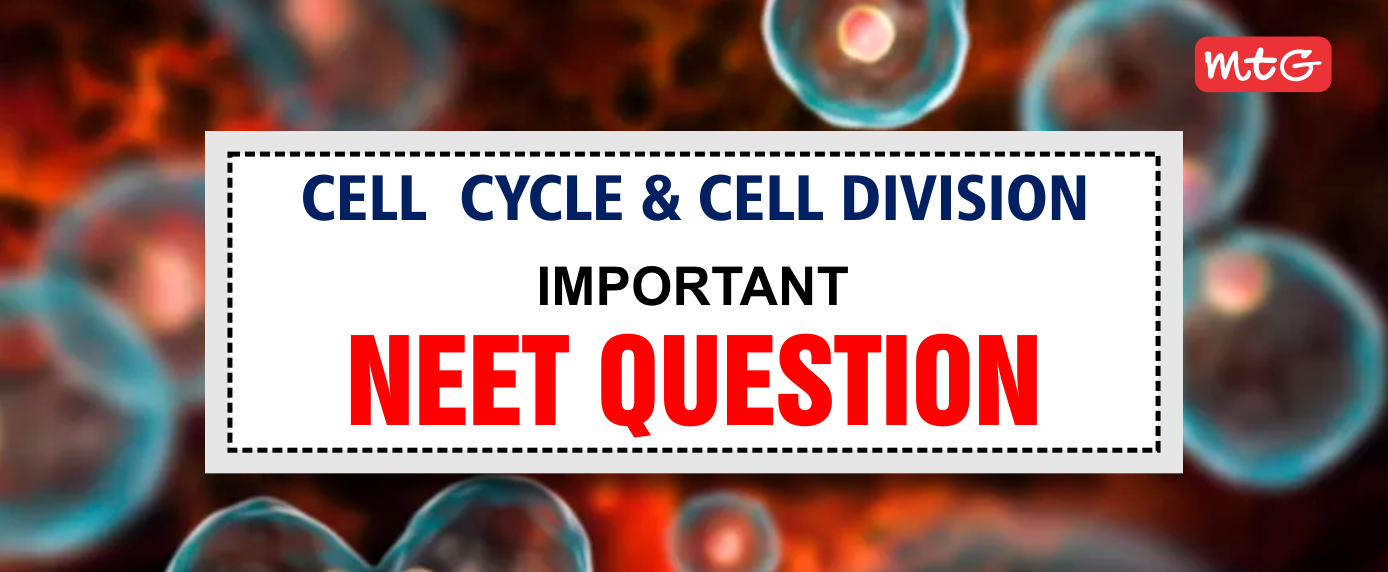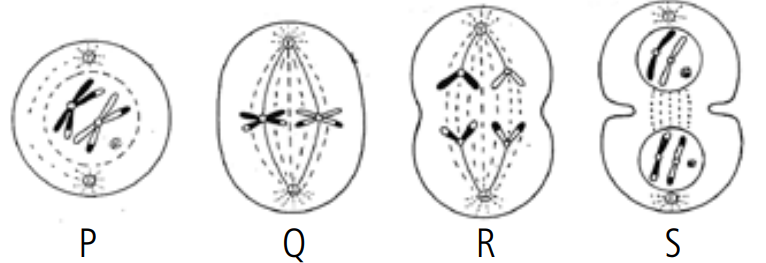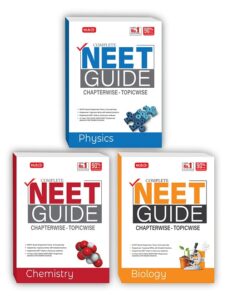
Many important questions are formed in competitive exams like NEET and boards from Class 11 Biology Chapter 10. Cell Cycle and Cell Division is the tenth chapter in the Class 11 NEET syllabus for Biology. Below, we have provided Important Questions from Class 11 Biology Chapter 10 Cell Cycle and Cell Division for your NEET 2023 preparation. You can check it here for revision purposes.
Latest: Biomolecules NEET Questions and Answers
Cell Cycle and Cell Division Class 11 NEET Questions and Answers
We’ve compiled a list of essential questions about the Cell Cycle and Cell Division biology class 11 chapter 10 that you should not miss while studying for your NEET Exams.
Cell Cycle and Cell Division MCQ for NEET
Select the mismatch pair
During which meiotic state, bivalent chromosomes clearly appear as tetrads?
Select the incorrect statement for meiosis.
In which stage of meiosis, the chromosomes become gradually visible due to compaction of chromatin?
In an organism, karyokinesis was not followed by cytokinesis, and as a result, a multinucleate condition arose. What term would you use for such condition?
Which stage of meiosis is marked by the formation of chiasmata?
Which of the following statements is not correct regarding cell division?
In animal cells, the peculiar arrangement of chromosomes 'bouquet stage' can be observed in ______ of meiosis I.
Cell Cycle and Cell Division Match the Following Questions for NEET
Match column I with column II.
| Column I | Column II |
|---|---|
| A. Zygotene | (i) Chromosomes align at equatorial plate |
| B. Diakinesis | (ii) Homologous chromosomes separate and sister chromatids remain associated at centromeres |
| C. Anaphase | (iii) Terminalisation of chiasmata |
| D. Metaphase-I | (iv) Pairing of homologous chromosomes |
A. A-(iv), B-(iii), C-(ii), D-(i)
Preparing for NEET? Don’t forget to check Chapterwise Important Questions–
The Living World NEET Questions and Answers
Biological Classification NEET Questions and Answers
Plant Kingdom NEET Questions and Answers
Animal Kingdom NEET Questions and Answers
Electrostatics NEET Questions and Answers
Morphology of Flowering Plants NEET Questions and Answers
Anatomy of Flowering Plants NEET Questions and Answers
Structural Organisation in Animals NEET Questions and Answers
Cell the Unit of Life NEET Questions and Answers
Cell Cycle and Cell Division Assertion and Reason Questions for NEET
In each of the following questions, a statement of Assertion (A) is given and a corresponding statement of Reason (R) is given just below it. Of the statements, pick the correct answer as :
Assertion : Meiosis introduces new combination of traits in the progeny. Reason : Meiosis involves crossing over
Assertion : During metaphase, the chromosomes align at equatorial plate. Reason : Total number of chromosomes can be observed during metaphase.
Assertion : The colchicine treated meristematic cells show doubling of chromosomes. Reason : Colchicine does not inhibit chromosome replication
Assertion : Chiasmata is observed in the zygotene stage. Reason : Chiasmata is a X-shaped structure
Assertion : In animal cells, the poles are formed by the asters. Reason : They are called amphiaster, since two asters are present at the spindle of animal cells.
Assertion : Cell division occurs only in asexually reproducing organisms. Reason : A typical eukaryotic cell divides once in 24 hours.
Assertion : The mitotic division is called equational division. Reason : The second meiotic division is also homotypic or equational division
Assertion : Interkinesis is a stage between two meiotic divisions. Reason : Interkinesis is generally short lived.
Cell Cycle and Cell Division Figure-Based Questions for NEET
Refer to the given figure and answer the following question.

(a) What do the figures represent? Also identify the stages P, Q, R and S from the given figure.
A. The figures represent the stages of meiosis II. Here, P – Prophase II, Q – Metaphase II, R – Anaphase II S – Telophase II.
(b) What major changes occur in the given figure S?
A. During telophase II is figure, following changes occur:
(i) the groups of chromosomes arrange themselves into haploid nuclei
(ii) nucleolus is formed
(iii) nucleoplasm and nuclear envelope appears
(iv) chromosomes elongate to form chromatin.
(c) How does this figure differ from mitosis?
A. The given figure represents the stages of meiosis II. It differs from mitosis in following ways :
(i) It always occurs in haploid cells.
(ii) It is not preceded by DNA replication.
(iii) The two chromatids of a chromosome are often dissimilar.
(iv) The daughter cells formed after meiosis II are neither similar to each other nor similar to the parent cell.
Best & Most Recommended Books for NEET UG 2023 Exam
|
NEET Champion
|
35 Years NEET Chapter-wise Solutions
|



































